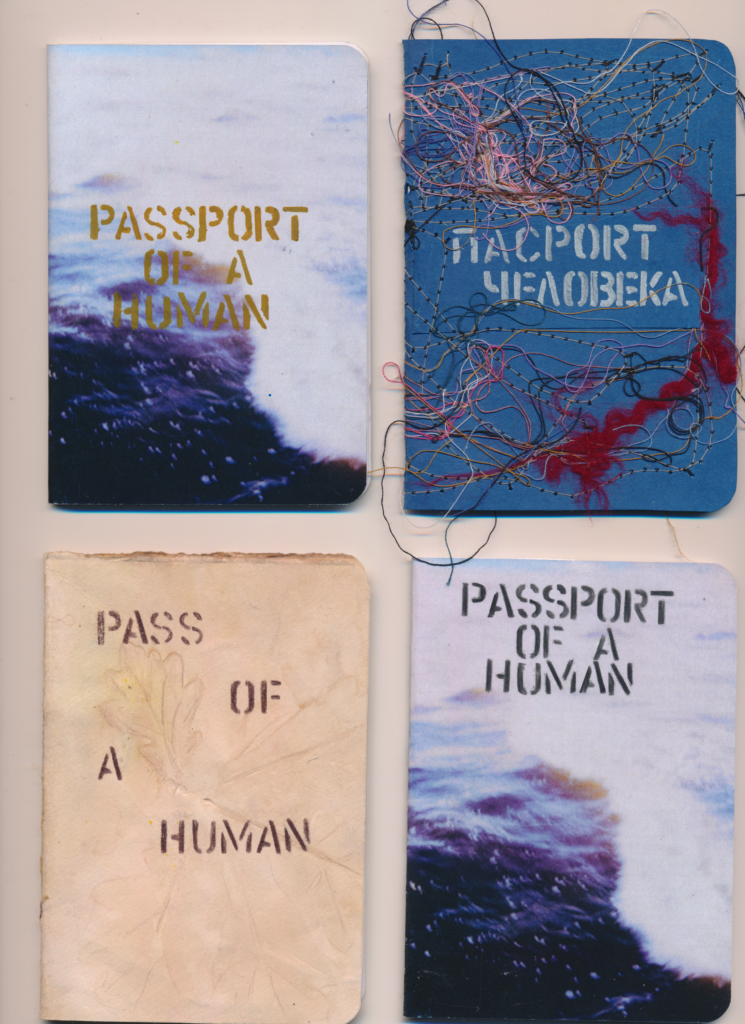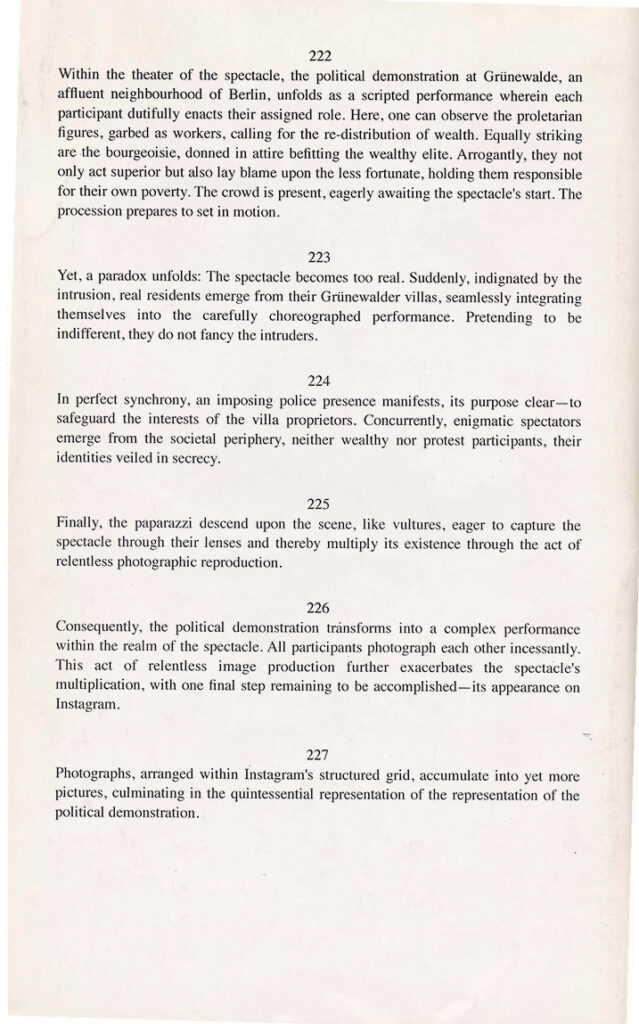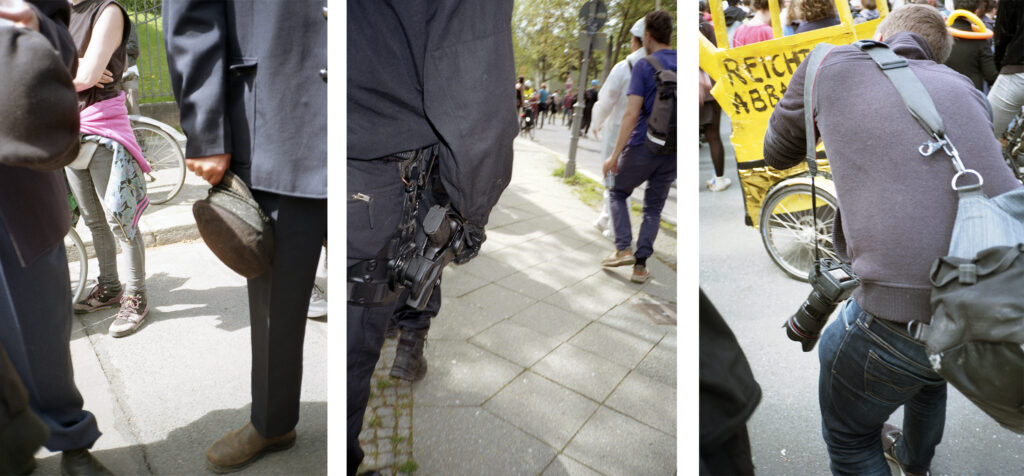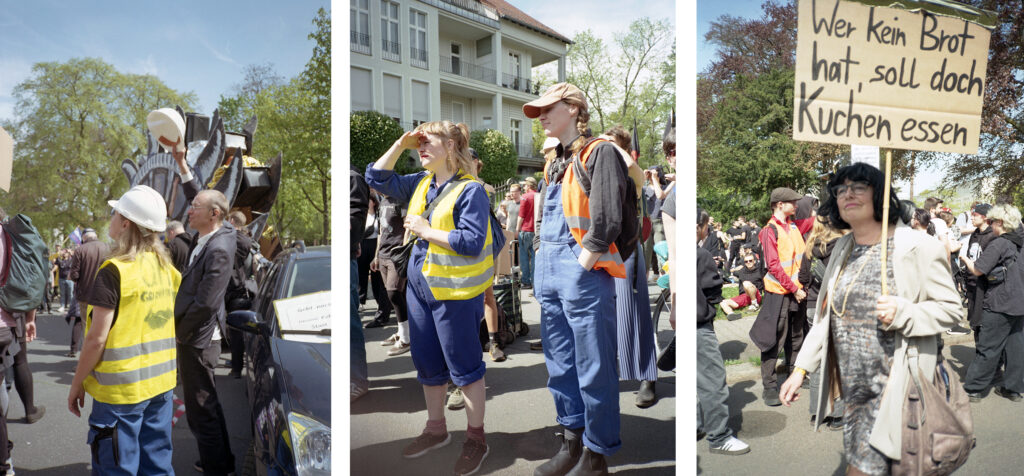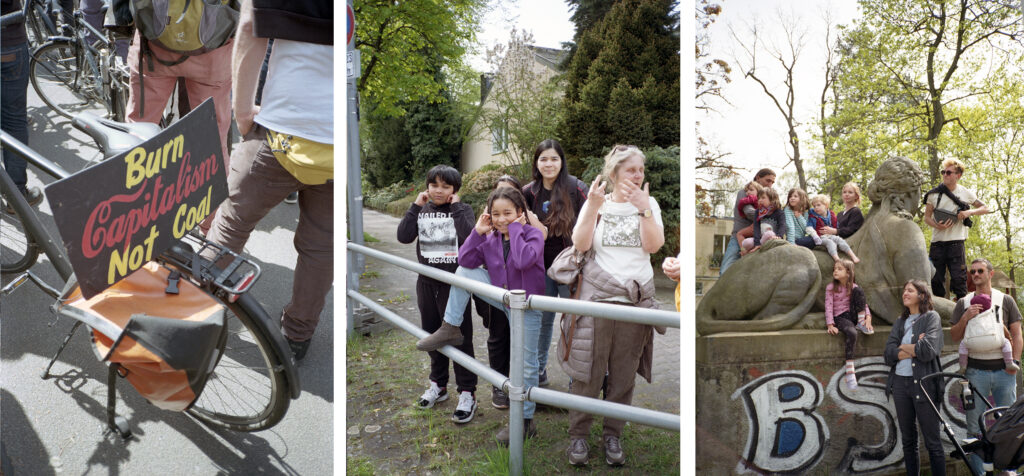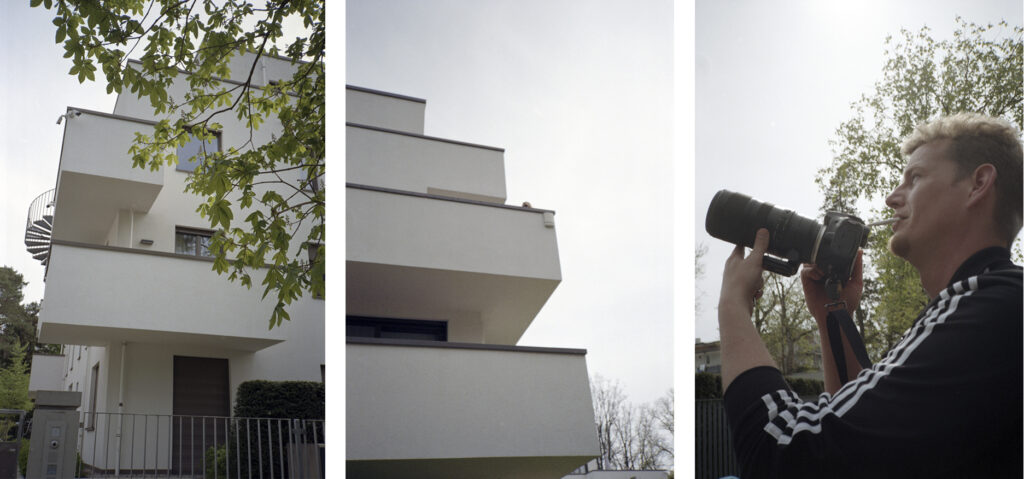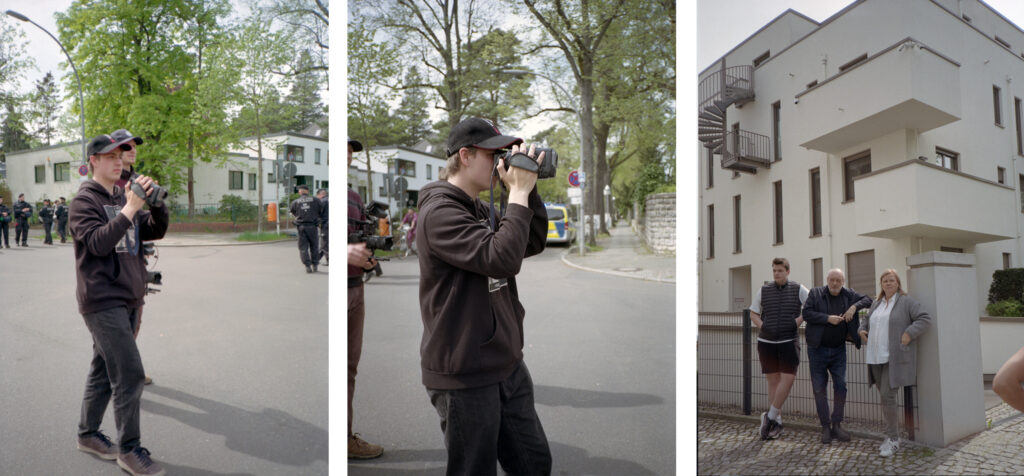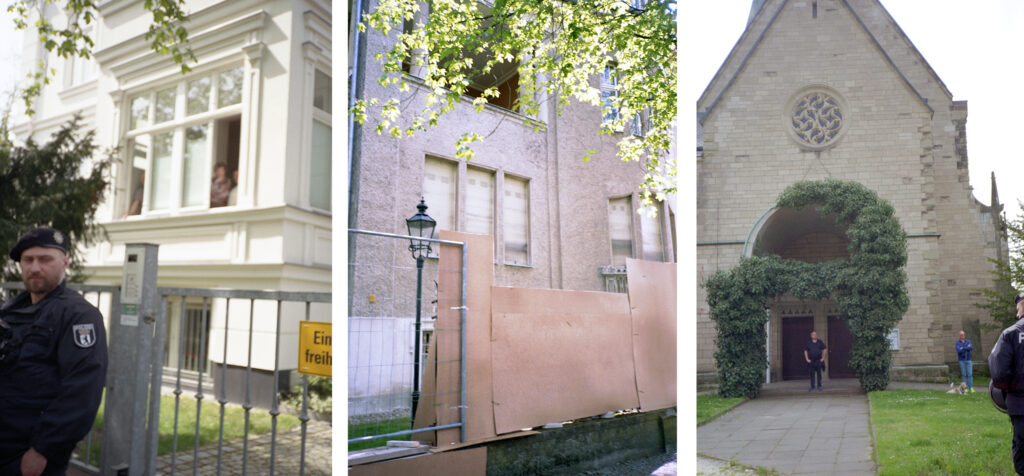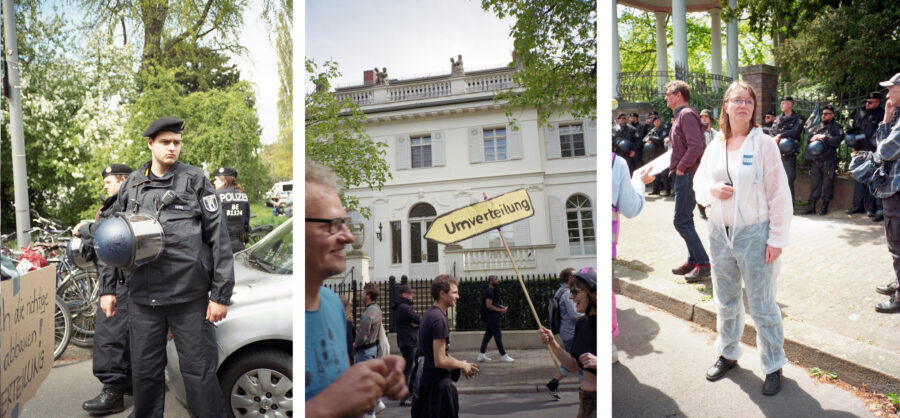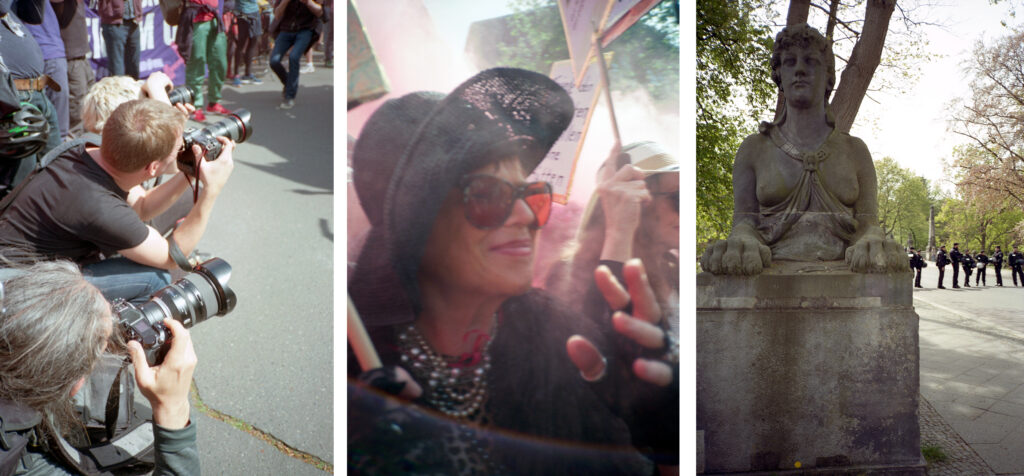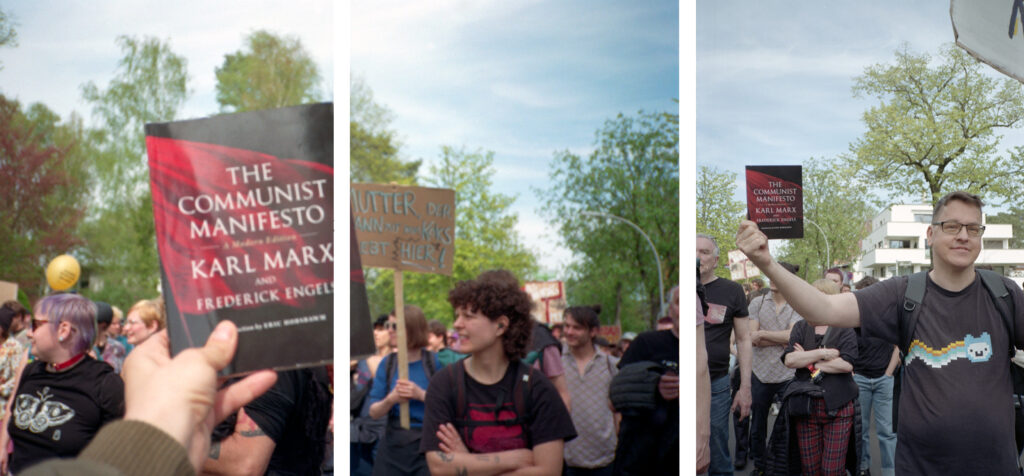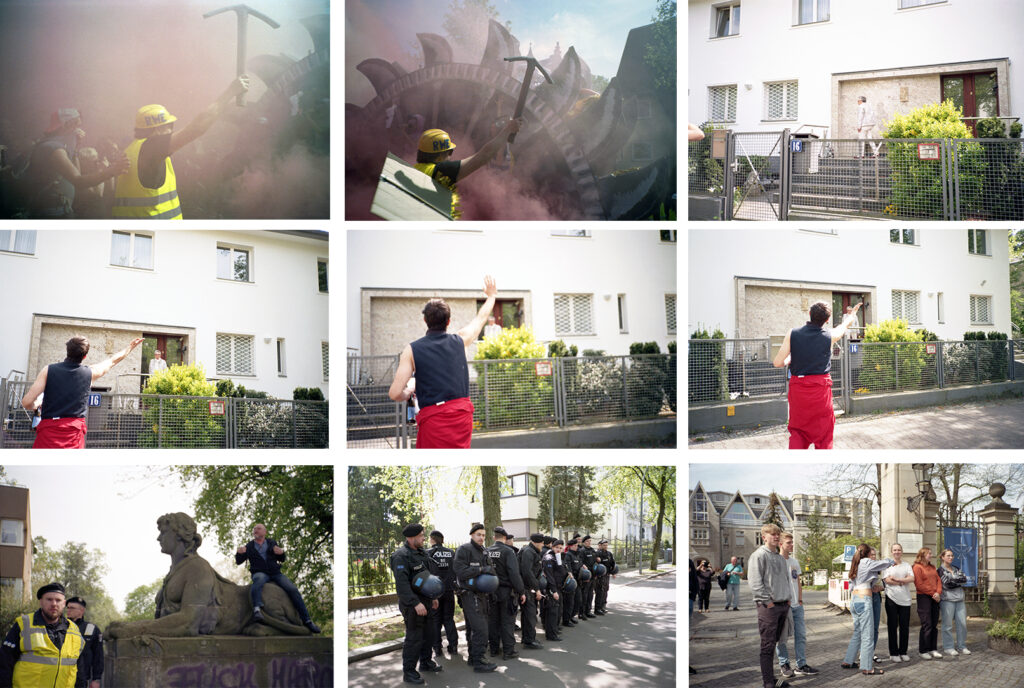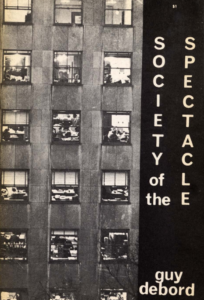222
Within the theater of the spectacle, the political demonstration at Grünewalde, an affluent neighbourhood of Berlin, unfolds as a scripted performance wherein each participant dutifully enacts their assigned role. Here, one can observe the proletarian figures, garbed as workers, calling for the re-distribution of wealth. Equally striking are the bourgeoisie, donned in attire befitting the wealthy elite. Arrogantly, they not only act superior but also lay blame upon the less fortunate, holding them responsible for their own poverty. The crowd is present, eagerly awaiting the spectacle’s start. The procession prepares to set in motion.
223
Yet, a paradox unfolds: The spectacle becomes too real. Suddenly, indignated by the intrusion, real residents emerge from their Grünewalder villas, seamlessly integrating themselves into the carefully choreographed performance. Pretending to be indifferent, they do not fancy the intruders.
224
In perfect synchrony, an imposing police presence manifests, its purpose clear—to safeguard the interests of the villa proprietors. Concurrently, enigmatic spectators emerge from the societal periphery, neither wealthy nor protest participants, their identities veiled in secrecy.
225
Finally, the paparazzi descend upon the scene, like vultures, eager to capture the spectacle through their lenses and thereby multiply its existence through the act of relentless photographic reproduction.
226
Consequently, the political demonstration transforms into a complex performance within the realm of the spectacle. All participants photograph each other incessantly. This act of relentless image production further exacerbates the spectacle’s multiplication, with one final step remaining to be accomplished—its appearance on Instagram.
227
Photographs, arranged within Instagram’s structured grid, accumulate into yet more pictures, culminating in the quintessential representation of the representation of the political demonstration.
